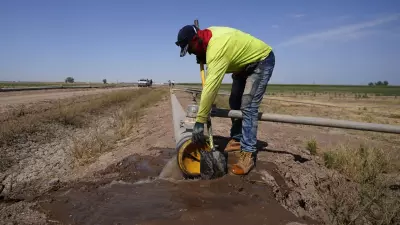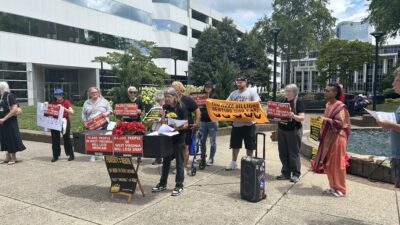Today’s farmers find themselves at the center of a great collision between humanity’s two supreme imperatives: Nourish us all, heal our planet.

Farmers in many parts of the world, particularly smallholder, Indigenous, and family farmers, are increasingly seeing their agriculture practices turn against them.
After years of following the orthodoxies of modern agriculture to boost production – often through monocropping and cropland expansion at the expense of natural environments – they stand astride degraded fields, their soils depleting, their waters dwindling, their pollinators fleeing, their rains becoming more mercurial, and their temperatures ever hotter. They have experienced the future, and it is dire.
Yet many farmers around the world are also showing us that such a future isn’t inevitable. Out of desperation, facing malnutrition of their children and depletion of their soils, these producers are more and more often farming against the grain of modern agriculture that arose in the wake of the Green Revolution – forging instead a Green Evolution that often challenges conventional wisdom and reconciles their roles as both food providers and stewards of the land. In the course of my decades of work as a writer and a journalist, I have met many of these farmers myself.
Farmers like Abebe Moliso, whose family land in the Ethiopian highlands became severely degraded from years of monocropping, overgrazing, and slashing the forests in the pursuit of new productive fields, all of which radically changed the local climate. The more he and his neighbors farmed, the less they grew. As the rains vanished and temperatures soared, the topsoil hardened like pavement. They eventually had no option but to stop farming and let the land heal. Supported by a food-for-work strategy developed by the World Food Program and the Ethiopian government, Abebe and his neighbors began terracing their gently sloping land and digging shallow water pans to collect rainwater whenever it came. They nurtured the growth of natural grasses to reinvigorate the soil and planted trees that would provide shade and falling leaves to cover and protect the ground, absorb carbon from the atmosphere, and stir the precipitation cycle. They also embraced crop diversity by adopting traditional crops, including hardier, more nutritious varieties that had been orphaned by modern agriculture demands.
After nearly a decade of healing, the natural allies were resurrected – springs and ponds reappeared, pollinators returned, insects and microorganisms multiplied to nourish the soils. His farming operation benefited too, with a diverse array of vegetables, fruits, and grains now flourishing in his fields.
Abebe’s mantra, “nourish and heal,” is catching hold around the globe. In Kenya, small dairy producers are cultivating new grasses that boost milk production and may reduce methane emissions from their cows, while also improving soil health. In Uganda, farmers are focusing on richly nutritious crops, like amaranth, millet, and bean and pea varieties that had been overlooked in the past, specifically to create new porridges that are reducing the malnutrition of their children. Growers in India and Guatemala are forsaking monocropping of their staple foods in favor of more diverse vegetables, fruits, and herbs, and deploying new irrigation methods to preserve water. In Kansas, some annual row crop farmers are pioneering perennial crops to counter the impacts of yearly plowing that has depleted their soils. A bit further north, the Sicangu Lakota community is reviving traditional Native American growing practices to reclaim their food sovereignty and also restoring the buffalo herd that once kept the Prairie ecology in balance.
Smallholder, Indigenous, and family farmers represent about 500 million farmers in total, who produce the majority of food in many countries and care for much of the world’s land containing vital forests, watersheds, and wetlands. These farmers are pushing forward the practices of agroforestry, agroecology, and regenerative agriculture, accelerating the movement to farm with nature instead of seeking to bend it to their will.
But they can’t do it alone. Producing more food to nourish our ever-increasing population while at the same time protecting the planet from the consequences requires a total re-engineering of our food system. Of particular importance is increasing investment in agricultural research and development – the type of concerted funding which fueled the Green Revolution more than a half-century ago – to support and reward these bold transformational efforts to nourish and heal. In the U.S., public funding for agricultural research has been declining in real dollars over the past two decades, falling by about one-third since peaking in 2002, according to the U.S. Department of Agriculture. For instance, funding for the development of perennial crops that yield multiple harvests over several years after just a single planting has been miniscule.
A recent report from the Farm Journal Foundation finds that China and Brazil now outspend the U.S. on public-sector agricultural research. The Farm Bill, currently before Congress, is an opportunity to reverse this trend – and to embrace the spirit of Abebe Moliso, whose dead land lives again.
“We have seen the mistakes of those who have come before us,” he says. “God gave me an open mind to learn. And I hope I can open the minds of others.”







